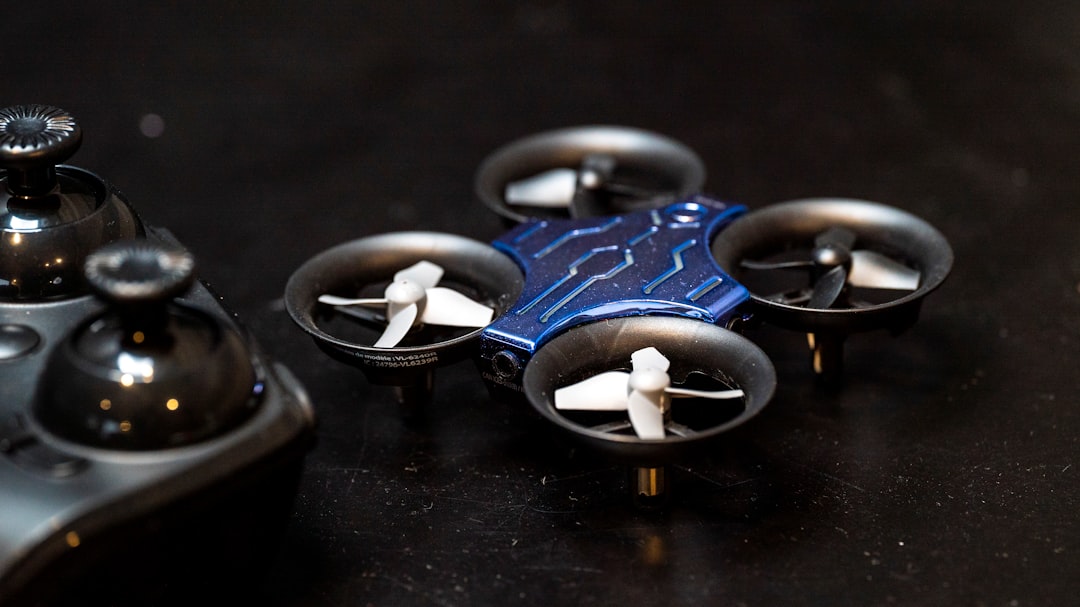In recent years, the intersection of artificial intelligence (AI) and food safety has garnered significant attention, particularly in the realm of food allergy detection. With the prevalence of food allergies on the rise, affecting millions of individuals worldwide, the need for innovative solutions has never been more pressing. Traditional methods of identifying allergens often rely on manual label reading and consumer vigilance, which can be both time-consuming and prone to error.
Enter AI-driven food allergy detection systems, which promise to revolutionize how we approach this critical issue. By leveraging advanced algorithms and machine learning techniques, these systems can analyze vast amounts of data to provide accurate and timely information about potential allergens in food products. The integration of AI into food allergy detection not only enhances safety for those with allergies but also empowers consumers with knowledge.
As technology continues to evolve, the capabilities of AI systems are expanding, allowing for more sophisticated analyses of food ingredients and labels. This article will explore the various facets of AI-driven food allergy detection, from ingredient analysis to personalized warnings, and examine the real-world applications that are already making a difference in the lives of individuals with food allergies.
Key Takeaways
- AI-driven food allergy detection uses artificial intelligence to identify and manage food allergies more effectively.
- AI systems can analyze food ingredients by processing large amounts of data to identify potential allergens and cross-contamination risks.
- AI has the potential to automatically check food labels for allergens, making it easier for individuals with allergies to make informed choices.
- Personalized warnings can be generated by AI for individuals with allergies, providing tailored information and recommendations.
- AI plays a crucial role in identifying hidden allergens in food products, helping to prevent allergic reactions.
How AI systems can analyze food ingredients
AI systems are equipped with the ability to process and analyze food ingredients at an unprecedented scale. By utilizing natural language processing (NLP) and machine learning algorithms, these systems can sift through extensive databases of food products and their components. This capability allows them to identify potential allergens based on a comprehensive understanding of ingredient lists, which can often be complex and misleading.
For instance, an AI system can recognize that certain ingredients may be derived from allergenic sources, even if they are not explicitly labeled as such. Moreover, AI can continuously learn from new data inputs, improving its accuracy over time. As more food products are introduced to the market and as ingredient formulations change, AI systems can adapt by updating their databases and refining their algorithms.
This dynamic learning process ensures that consumers receive the most current information regarding allergens, thereby enhancing their ability to make informed choices about what they eat. The potential for AI to analyze food ingredients extends beyond mere identification; it also encompasses the ability to predict cross-contamination risks and assess the safety of food products in various contexts.
The potential of AI in automatically checking food labels

One of the most promising applications of AI in food allergy detection is its ability to automatically check food labels for allergenic ingredients. Traditional label reading requires consumers to be vigilant and knowledgeable about potential allergens, which can be a daunting task, especially for those with multiple allergies. AI-driven systems can alleviate this burden by scanning product labels in real-time and flagging any ingredients that may pose a risk.
AI systems can utilize image recognition technology to analyze packaging labels, extracting relevant information with remarkable accuracy. By employing deep learning techniques, these systems can recognize text in various fonts and formats, ensuring that even the most obscure allergens are detected.
Furthermore, AI can be programmed to consider regional variations in labeling practices, accounting for differences in ingredient naming conventions across countries. This adaptability makes AI a powerful ally for consumers navigating the complexities of food labeling in an increasingly globalized market.
Personalized warnings for individuals with allergies
The advent of AI-driven food allergy detection opens up exciting possibilities for personalized warnings tailored to individual needs. Each person with a food allergy has unique sensitivities and dietary restrictions, which can vary widely even within the same allergenic category. AI systems can leverage user data—such as specific allergies, dietary preferences, and past reactions—to generate customized alerts when potentially harmful foods are detected.
This level of personalization enhances user experience and safety by providing targeted information that is relevant to each individual. For example, an AI application could notify a user about a new product that contains an ingredient they are allergic to while simultaneously suggesting safe alternatives based on their preferences. By creating a more tailored approach to food safety, AI empowers individuals to navigate their dietary restrictions with confidence and ease.
Hidden allergens pose a significant challenge for individuals with food allergies, as they may not be explicitly listed on product labels. These allergens can be present in trace amounts or disguised under different names, making it difficult for consumers to identify potential risks. AI plays a crucial role in addressing this issue by utilizing advanced data analysis techniques to uncover hidden allergens within food products.
By analyzing historical data on ingredient sourcing and manufacturing processes, AI systems can identify patterns that indicate the presence of hidden allergens. For instance, if a particular brand has a history of cross-contamination during production, an AI system can flag products from that brand as potentially unsafe for individuals with specific allergies. Additionally, machine learning algorithms can be trained on vast datasets that include consumer reports of allergic reactions, allowing the system to recognize correlations between certain ingredients and adverse reactions.
Real-life applications of AI in food allergy detection

The practical applications of AI in food allergy detection are already being realized across various sectors. Several startups and established companies have developed innovative solutions that harness the power of AI to enhance food safety for consumers with allergies. For instance, mobile applications equipped with AI capabilities allow users to scan barcodes or take pictures of food labels to receive instant feedback on allergenic ingredients.
In addition to consumer-facing applications, AI is also being integrated into supply chain management within the food industry. Manufacturers are utilizing AI-driven systems to monitor ingredient sourcing and production processes, ensuring that allergen control measures are effectively implemented. This proactive approach not only protects consumers but also helps companies maintain compliance with regulatory standards related to allergen labeling and safety.
The future of AI-driven food allergy detection
As technology continues to advance, the future of AI-driven food allergy detection looks promising. Ongoing research and development efforts are focused on enhancing the capabilities of these systems, making them even more accurate and user-friendly. One area of exploration is the integration of AI with wearable technology, allowing for real-time monitoring of allergic reactions and providing immediate alerts when exposure occurs.
Furthermore, as public awareness of food allergies grows, there is an increasing demand for transparency within the food industry. Consumers are seeking more information about the products they consume, and AI-driven solutions can play a pivotal role in meeting this demand. By providing detailed insights into ingredient sourcing and potential allergen risks, these systems can foster trust between consumers and manufacturers.
Ethical considerations and challenges in AI-based food allergy recognition
While the potential benefits of AI-driven food allergy detection are substantial, there are also ethical considerations and challenges that must be addressed. One major concern is data privacy; as these systems often rely on personal information to provide tailored recommendations, ensuring that user data is protected is paramount. Companies must implement robust security measures to safeguard sensitive information while maintaining transparency about how data is collected and used.
Additionally, there is the challenge of algorithmic bias—if an AI system is trained on incomplete or unrepresentative datasets, it may produce inaccurate results that could jeopardize consumer safety.
As we move forward into an era where AI plays an increasingly prominent role in our lives, it is crucial to strike a balance between innovation and ethical responsibility in order to create a safer environment for individuals with food allergies.
In conclusion, AI-driven food allergy detection represents a significant advancement in our ability to manage dietary restrictions effectively. By harnessing the power of technology to analyze ingredients, check labels automatically, provide personalized warnings, identify hidden allergens, and facilitate real-world applications, we are paving the way for a safer future for those affected by food allergies. As we continue to explore the possibilities that lie ahead, it is essential to remain vigilant about ethical considerations while embracing the transformative potential of artificial intelligence in this critical area of public health.
Wenn Sie sich für die Anwendung von KI in der Erkennung von Lebensmittelallergien interessieren, könnte der Artikel über den Einsatz von KI in der Gesundheits- und Wellnessbranche besonders aufschlussreich sein. Dieser Artikel, der auf der Webseite von Metaversum verfügbar ist, behandelt verschiedene innovative Ansätze, wie KI-Systeme im Gesundheitssektor genutzt werden, einschließlich der Analyse von Lebensmittelzutaten zur Warnung vor Allergenen. Für weitere Informationen und tiefergehende Einblicke in dieses Thema, besuchen Sie bitte KI in Gesundheits- und Wellnessindustrien.
FAQs
What is KI-gesteuerte Lebensmittelallergieerkennung?
KI-gesteuerte Lebensmittelallergieerkennung refers to the use of artificial intelligence (KI) systems to analyze food ingredients and inform users about potential allergic reactions. These systems can automatically check food labels and provide personalized warnings for individuals with food allergies.
How do KI systems analyze food ingredients?
KI systems analyze food ingredients by using algorithms to process and interpret the information on food labels. They can identify potential allergens and cross-reference them with a user’s specific allergies to provide personalized allergy warnings.
What are the applications of KI-gesteuerte Lebensmittelallergieerkennung?
The applications of KI-gesteuerte Lebensmittelallergieerkennung include automatic checking of food labels for allergens, providing personalized warnings for individuals with food allergies, and helping users make informed decisions about the foods they consume.
How can KI systems benefit individuals with food allergies?
KI systems can benefit individuals with food allergies by providing them with a tool to easily and accurately identify potential allergens in food products. This can help prevent allergic reactions and improve overall safety and confidence in food choices.
Are there any limitations to KI-gesteuerte Lebensmittelallergieerkennung?
Some limitations of KI-gesteuerte Lebensmittelallergieerkennung may include the need for accurate and up-to-date food ingredient data, potential challenges in interpreting complex food labels, and the inability to detect certain allergens that may not be listed on food labels.











Leave a Reply